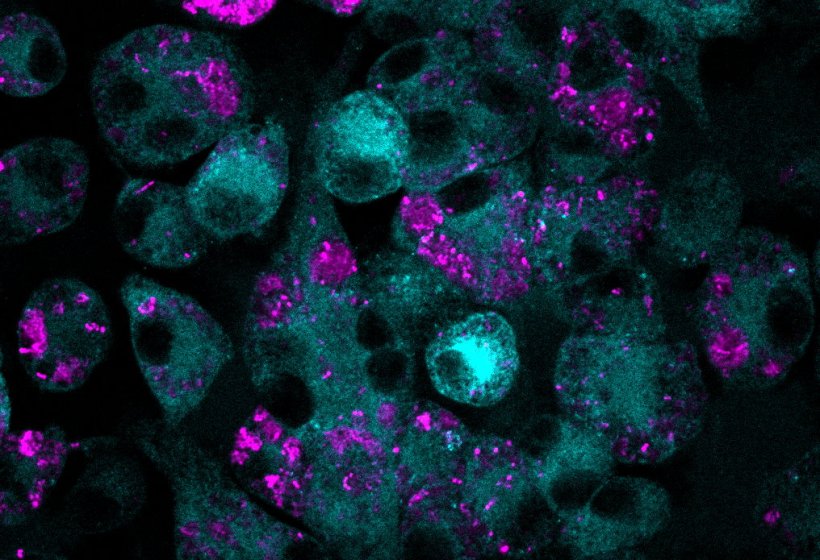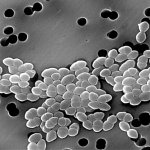
Photo credit: SMART
News • MTX in the mix
Researchers develop novel therapy for vancomycin-resistant infections
Researchers from the Antimicrobial Resistance (AMR) Interdisciplinary Research Group (IRG) at Singapore-MIT Alliance for Research and Technology (SMART), MIT’s research enterprise in Singapore, in collaboration with Singapore Centre for Environmental Life Sciences Engineering (SCELSE), Nanyang Technological University (NTU), Massachusetts Institute of Technology (MIT), and University of Geneva, have developed a novel combination therapy using an anticancer agent, mitoxantrone (MTX), together with an antibiotic, vancomycin, for treating bacteria that are resistant to the vancomycin, which is also known as vancomycin-resistant Enterococcus faecalis (VRE).
The therapy, detailed in the scientific journal Science Advances, uniquely targets both VRE and the host, stimulating the host immune system to more effectively clear bacterial infections and accelerate infected wound healing.
Antimicrobial resistance is a significant global health concern, causing 4.95 million deaths from infections associated with or attributed to antimicrobial resistance in 2019 alone. By 2050, the Asia-Pacific region is forecasted to account for 47% of AMR-related deaths worldwide if immediate and coordinated actions are not taken to avert a potential drug-resistance crisis. In response to this aggravating health threat, new and innovative approaches to treating bacterial infections are being developed, including the use of antimicrobials that can overcome resistance mechanisms and host-directed therapies that enhance the innate human immune system to combat bacterial infections.
Recommended article

Article • Bacterial defense mechanism
Antibiotic resistance: a global threat to healthcare
Antimicrobial resistance (AMR) is becoming more prevalent around the world, constituting a serious threat to public health. When bacteria acquire resistance against antibiotics, common medical procedures – for example, in surgery – become impossible due to the high infection risk. Keep reading to find out about AMR research, development of new antibiotics and antibiotic alternatives.
VRE is a ‘hard-to-kill’ bacteria due to its increasing antibiotic resistance and can cause serious infections, including urinary tract, bloodstream, and wound infections associated with catheters or surgical procedures. The treatment of VRE infections has posed a significant challenge as the bacteria exhibit resistance to vancomycin – an antibiotic commonly used to treat endocarditis, skin, stomach and intestine infections caused by Gram-positive bacteria – and other commonly used antibiotics.
The potent combination between MTX and vancomycin [...] possesses the ability to enhance the host immune system and improve wound healing by bringing more immune cells to the site of infection and by making the immune cells better at killing bacteria
Jianzhu Chen
In this research, the team tested MTX’s effectiveness and antibiotic activity against VRE, both in vitro and in vivo. Despite VRE’s resistance to vancomycin, MTX was found to inhibit the growth of VRE more effectively when used in the presence of vancomycin. This outcome is due to the synergistic relationship between MTX and vancomycin, which makes VRE more sensitive to vancomycin by lowering the vancomycin concentration required to kill VRE. The research also demonstrated that MTX improved wound healing by enhancing the ability of macrophages - a type of white blood cell that kills microorganisms, removes dead cells, and stimulates the action of other immune cells - to fight off VRE infections and by recruiting more immune cells to the site of infection.
In their paper titled “Mitoxantrone Targets Both Host and Bacteria to Overcome Vancomycin Resistance in Enterococcus faecalis”, the researchers demonstrated that MTX, typically used to treat acute leukaemia, prostate, and breast cancer, as well as multiple sclerosis, is a powerful antibiotic against VRE. It works synergistically with vancomycin, boosts macrophage recruitment and bactericidal activity, and holds great potential as a dual bacterium- and host-targeted therapy for overcoming VRE.
“Facing the global health threat of antimicrobial resistance, innovative and effective solutions to combat bacterial infections are necessary. Through our research, we discovered the potent combination between MTX and vancomycin, which is highly effective in inhibiting the growth of VRE. Furthermore, it also possesses the ability to enhance the host immune system and improve wound healing by bringing more immune cells to the site of infection and by making the immune cells better at killing bacteria,” shared Dr Jianzhu Chen, co-corresponding author of the paper, Principal Investigator at SMART AMR, and Professor of Biology at the Koch Institute for Integrative Cancer Research at MIT.
Recommended article

News • Infectious disease research
Hidden bacteria increases risk of antimicrobial resistant infection in hospital patients
Carriers of a specific bacteria have a 14% chance of developing an antibiotic resistant infection with 30 days of hospitalisation, according to new research from Amsterdam.
“The treatment options for VRE infections are severely limited due to its intrinsic and acquired resistance to many conventional antibiotics, including vancomycin. Our team’s breakthrough in the discovery of mitoxantrone as a highly effective dual bacterium- and host-targeted therapy against VRE, represents a major step forward in the fight against VRE infections,” said Dr Ronni da Silva, first author of the paper and Postdoctoral Researcher at SMART AMR.
The researchers are continuing their research with further preclinical studies to prepare for a clinical trial, specifically targeting the development of topical treatments for chronic diabetic wound infections. Dr Kimberly Kline, co-corresponding author of the paper, Principal Investigator at SMART AMR, and Professor at the University of Geneva, added, “Our research sets an important foundation to explore the potential impact of utilising mitoxantrone for the treatment of bacterial infections. As we continue to explore the full range of applications with further research, we aim to bring about a transformative change with new and innovative therapies to overcome vancomycin resistance in the future.”
The research is carried out by SMART and supported by the National Research Foundation (NRF) Singapore under its Campus for Research Excellence And Technological Enterprise (CREATE) programme. The researchers at MIT, SCELSE, NTU, and the University of Geneva, contributed vital scientific input, assisted in project development, performed data analysis and conducted experiments.
Source: Singapore-MIT Alliance for Research and Technology
08.03.2023











